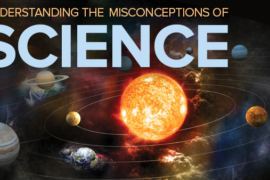
All of our physical theories are based on fundamental laws formulated in a mathematical framework and on rules mapping the elements of the mathematical theory to physical objects. Millennia of observations were fully understood only when the seminal ideas of Galileo, Kepler, and Newton were impacted by mathematics. The theoretical elaborations of the laws of motion by Lagrange, Hamilton, and others are at the basis of all mechanical devices that affect modern life in essentially all its practical aspects.
 Classical mechanics stands as an example of the scientific method organizing a “complex” collection of information into theoretically rigorous, unifying principles; in this sense, mechanics represents one of the highest forms of mathematical modeling. The elegance and depth of the theoretical thinking coupled with its ubiquitous applications make it comparable, in applied sciences, to Euclid’s geometry. There are three formulation of of classical mechanics — Newtonian, Lagrangian, Hamiltonian.
Classical mechanics stands as an example of the scientific method organizing a “complex” collection of information into theoretically rigorous, unifying principles; in this sense, mechanics represents one of the highest forms of mathematical modeling. The elegance and depth of the theoretical thinking coupled with its ubiquitous applications make it comparable, in applied sciences, to Euclid’s geometry. There are three formulation of of classical mechanics — Newtonian, Lagrangian, Hamiltonian.
Newtonian mechanics operates in terms of forces in contrast Lagrangian and Hamiltonian mechanics operate in terms of energies. They are obviously related in that they all describe nature. You can think of the relationship as being that forces indicate how the energies are flowing in the system. Newtonian mechanics has more general practical application insofar as you can include friction in it quite easily.
Lagrangian mechanics develops equations of motion by minimizing the integral of a function of system’s coordinates and the time derivatives of those coordinates. For this, one requirement is a basic understanding of how velocity and acceleration are derived from position.
For Lagrangian mechanics you need a Lagrangian function which is typically a function of position and velocity. The Lagrangian is equal to the kinetic energy minus the potential energy of the object at any point along the path. If you have a force as a function of position then it would characterizes the path (trajectory) of an object. The moving object always moves in such a way that the sum of the values of the Lagrangian along the entire path (the integral of the Lagrangian) is a minimum.
Lagrangian formulation generalizes very nicely to handle situations which are outside the realm of basic Newtonian mechanics, including electromagnetism and relativity. But primarily used when one is concerned with the coordinate-independent feature of a solution.
The Lagrangian formulation assumes that in a system, the forces of constraints don’t do any work, they only reduce the number degrees of freedom of the system. So one need not know the form of force the constraint forces have unlike Newtonian mechanics!!!
At the end the equations of motion should be the same for Newtonian and Lagrangian mechanics, although Lagrangian mechanics allows constraints to be expressed more naturally. An accurate description of nature is all about a Frame of reference. In Newtonian physics you stand at a point and watch something move in relation to the stationary observation point based on forces applied. In Lagrangian physics you frame of reference is the object that’s moving and experiences the forces.
Hamiltonian mechanics is a refinement of Lagrangian mechanics in which the time derivatives of a system’s coordinates are replaced by “generalized momenta” (time derivatives of the system’s Lagrangian).
A function (sometimes called the Hamiltonian function) which expresses the energy of a system in terms of momentum and position. In the simplest situations, the total energy is just the sum of the kinetic and potential energies. For more complicated systems, ‘the Hamiltonian’ becomes a set of differential equations describing the system that is being investigated. Mechanics using Hamiltonian equations, representing interactions in terms of changes in momentum, instead of in terms of forces (the way things are described in Newtonian mechanics), and solving those differential equations as necessary.
This approach is conceptually similar to using the equations of motion based on Newton’s laws to describe the way in which the position of a ball flying through the air changes from one instant to the next as it moves along its trajectory. The three formulations are 100% equivalent, but one or the other may be more convenient to use, depending on the system you wish to describe. Generally, a set of 1-dimensional springs & masses is best approached with Newtonian mechanics. Anything else, best with one of the other formulations.
To go beyond Newtonian mechanics you’ll need a foundation in systems of ordinary differential equations in order to understand any of the formulations. It is best to have a good grounding in Newtonian mechanics before approaching Lagrangian or Hamiltonian mechanics; Lagrangian and Hamiltonian mechanics require a foundation in systems of ordinary differential, knowledge of partial differential equations and variational calculus.

 PacificRimTackle
PacificRimTackle
